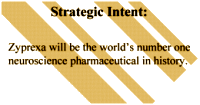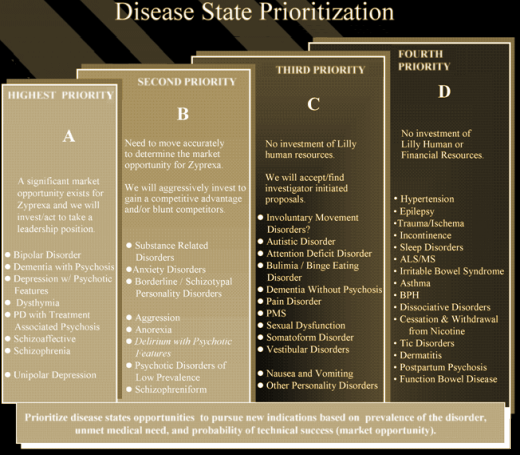While Freud’s advice about the dangers of therapeutic zeal was directed at overly ambitious psychotherapists, it might’ve been decent advice for the modern NIMH and academic research community. Though an outsider in the world of neuroscience, it seemed to me that there was a glaring paradox in the time-frame when psychiatry actually became so much more biologically focused [eg the 1980 DSM-III]. Prior to that time, we talked and thought more about etiology. There was the catecholamine hypothesis, the dopamine hypothesis, twin studies, Reserpine precipitated depressions, amphetamine psychoses, the Dexamethasone Suppression Test, REM sleep disturbances, etc. Over time, there was increasingly less talk about causality of illness, and a greater focus on the biology of the treatment itself. Paralleling the focus on treatments, there has been a specialization by technique. The traditional neurochemists and neuroendocrinologists were joined by people using techniques from genetics and the functional magnetic resonance imaging of Seiji Ogawa that greatly simplified the technique. Exciting stuff, but still early in development, and attempts to apply these technologies to diagnosis, etiology, or treatment have been disappointing so far.
In recent posts post about the commercial success of Risperdal, except for the psychoses of Schizophrenia, Mania, or maybe Dementia with psychosis, the applications suggested for the drug are empiric, like alchemy – Mental Retardation, Autism, Bipolar Children, dysruptive children, augmentation of antidepressants – more in the range of let’s-try-this than scientific reasoning. There’s nothing wrong with let’s-try-this. It’s been a source for many medical discoveries over the centuries. But one would have to be asleep to not realize that commercial gain has driven much of that thinking, and thus a lot of our research – here’s the broad spectrum let’s-try-this strategy of Lily’s Zyprexa as an example:
 [BPH? benign prostatic hypertrophy?]. Eli Lilly was certainly not coy about their motivations. But that’s a pharmaceutical company. It’s a little harder to understand how the focus of so many academicians turned from diagnosis, pathophysiology, and etiology to the biology of treatment, unless they shared the motivations of their industrial benefactors. So why should I be coy if Lilly isn’t? Surely that’s what happened.
[BPH? benign prostatic hypertrophy?]. Eli Lilly was certainly not coy about their motivations. But that’s a pharmaceutical company. It’s a little harder to understand how the focus of so many academicians turned from diagnosis, pathophysiology, and etiology to the biology of treatment, unless they shared the motivations of their industrial benefactors. So why should I be coy if Lilly isn’t? Surely that’s what happened.
Back in the day, there was a lot of excitement about abnormalities in cortisol metabolism and REM Sleep – findings connecting certain kinds of depression to biology. And yet with the coming of the neoKraepelinian psychiatry in 1980, the "kinds of depression" just evaporated into the broad DSM-III category of Major Depressive Disorder, and that particular line of thinking vaporized with them. In abandoning psychological causality, the DSM-III also seemed to dump what we were learning about biology too. We began to categorize disorders sort of like Lilly – by what medication they might respond to. Maybe not quite that bad, but in the same ballpark. We hypothesized that a drug that hit two receptors [SNRIs] might be better than a drug the hit one [SSRIs]. And then we started mixing and matching drugs and classes. So if a patient didn’t respond to one antidepressant, we tried another [sequencing]; or added another [combining]; or even added another class [augmenting]. These were called innovative strategies. One of the more recent innovative strategies has been personalized medicine – the notion that responsiveness to one or another of the antidepressants is genetically determined [although it’s hard to understand why adding them together wouldn’t cover that base]. There might be something in that haystack, but so far the needle remains elusive [though the NIMH has sure spent millions looking – STAR*D, CO-MED, IMPACT, EMBARC, TADS, etc].
The thrust of my thinking here is a variant on Freud’s sentiment quoted above. Obviously, the pharmaceutical companies are looking for drugs that have the broadest possible market. In the case of Risperdal or Zyprexa [or for that matter Seroquel, Abilify, Geodon, etc], that market pretty much covered the entire mental illness spectrum throughout the whole of the life cycle. But the academic research directives seem to be following the same paths – a drug hunt. The NIMH is in love with keeping research close to the perceived need for new drugs with its emphasis on Translational Medicine and industry partnerships, with directed research with incentives. More recently, Dr. Insel is responding to the flight of Pharma from CNS development by proposing that the agency get into the business of new drug development – Experimental Medicine he calls it – and there are moves to short circuit the approval process to speed up the arrival of new drugs. We now have a new term, innovation crisis, as if our scientists have something like writer’s block.
After thirty years of clinical trials of anything[s]-you-can-imagine in the DSM-III/IV/5 category of Major Depressive Disorder, how about a return to the tack of fractionating that diagnostic category into discrete conditions? The same with Schizophrenia? A prime example is the silliness of pulling something we understand, namely Grief, into a category we don’t understand, Major Depressive Disorder. That’s going in the wrong direction. What about getting back to the important task of looking for proof for biological causality or at least the pathophysiology of symptoms rather than throwing the kitchen sink at the whole diagnostic manual? What about establishing registries of the suspected recurrent illnesses? or longitudinal registries of diagnoses that help us iterate and refine our categories rather than relying on the experts du jour to stir them around? What I’m suggesting is that a quarter century of close ties with industry goals has infected our research community with becoming treatment obsessed and market driven. Rather than taking over for industry, it seems like a good time to break away from their therapeutic ambitions and return to trying to understand what is happening. Understanding is the pipeline that’s empty right now. And even if the medications are symptomatic rather than aimed at cause, the pathophysiology of those symptoms themselves is of prime importance. We have a basic sciences gap, not an innovation crisis.
… clinicians have to decide on treatments and therefore the best goal, interim goal at least, we may want to understand the pathophysiology better and I’m not against that, but I think we have to help clinicians decide on one versus the other treatment.


Since drugs and mental illness are such wonderful bedfellows that a person can be labeled as “bipolar” after having a reaction to an antidepressant, perhaps they could get more specific about bipolar disorders by labeling people according to what made them flip. Since none of the antidepressants did anything for me, except desipramine which made me hypomanic in such a unique way that it was not comparable to any other state I’d ever been in; I think and people like me, should be labeled as “desimpramine bipolar” for instance.
But seriously, if they’re not trying to figure out what the medicines they prescribe are actually doing in human brains they don’t want to understand the biology of brains, much less minds..
“Zyprexa will be the world’s number one neuroscience pharmaceutical in history.”
This kind of tortured phraseology, doubtless obtained with assistance from $3000/day consultants trading in “vision” and “mission” statement production is utter tripe. I can visualize the ‘facilitation’ sessions and can only imagine that with Zyprexa’s indication in the treatment of nausea and vomiting that there was a bowl of tablets in the middle of the conference table where the M&Ms used to be. How else could a thinking person arrive at a point where they could evaluate their “end” and not be sick as a dog?